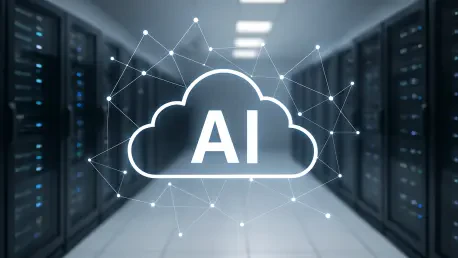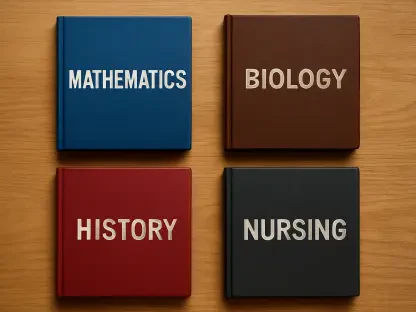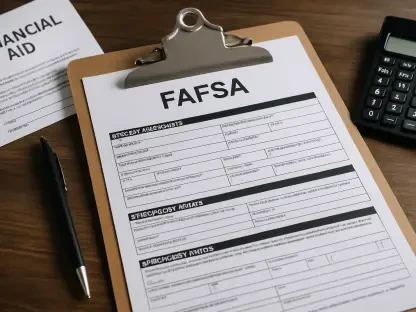As generative AI tools like ChatGPT, Copilot, and Gemini become ubiquitous in academic settings, universities face a transformative challenge that could redefine the future of higher education while adapting to new technological realities. These technologies, capable of drafting essays, summarizing complex texts, and solving intricate problems with ease, have sparked widespread concern about plagiarism and the erosion of academic integrity among students and educators alike. Yet, amidst these worries, a growing number of institutions are shifting their perspective, viewing AI not as a looming threat but as a unique opportunity to innovate. By focusing on critical thinking—a distinctly human skill that AI struggles to replicate—universities can adapt to this technological wave and better prepare students for a world increasingly shaped by automation and digital tools. This article delves into how higher education can pivot from fear to forward-thinking strategies, ensuring that students emerge as discerning thinkers ready to navigate and influence a tech-driven landscape.
Rethinking Education in the AI Era
The Challenge of Traditional Assessments
The rapid integration of AI into student workflows has laid bare significant shortcomings in conventional educational frameworks, particularly in how knowledge is assessed. Many university exams and assignments still hinge on rote memorization and basic comprehension—tasks that tools like ChatGPT can perform with startling accuracy and speed. This reliance on outdated methods creates a disconnect, as students can easily bypass genuine learning by outsourcing their work to AI systems. The result is a pressing concern: if assessments measure only what machines can replicate, they fail to capture the deeper intellectual growth that higher education aims to foster. Addressing this issue requires a fundamental reevaluation of what constitutes meaningful evaluation in an era where information is instantly accessible through technology, pushing institutions to rethink their approach to testing student capabilities.
Beyond the immediate risk of academic dishonesty, the broader implication of traditional assessments is their misalignment with the demands of today’s workforce and society. Employers increasingly value skills like problem-solving, adaptability, and critical analysis over mere factual recall, yet many curricula remain anchored in outdated priorities. AI’s proficiency in handling lower-level cognitive tasks serves as a wake-up call for universities to shift their focus. Instead of penalizing students for using technology, the emphasis should turn toward designing evaluations that challenge them to demonstrate independent thought and nuanced understanding. This transition is not just about curbing cheating but about ensuring that graduates are equipped with relevant, enduring skills that distinguish them in a competitive, tech-saturated environment.
Opportunity for Higher-Order Learning
One promising avenue for reimagining education lies in leveraging frameworks like Bloom’s Taxonomy, which categorizes cognitive skills from basic recall to advanced creation and evaluation. AI excels at the lower tiers—remembering facts and understanding concepts—but falters when tasked with contextual analysis or original synthesis. This gap offers universities a clear path to prioritize higher-order thinking in their teaching and assessment strategies. By focusing on skills such as critical evaluation and creative problem-solving, educators can design learning experiences that push students beyond what AI can achieve. This approach not only counters the risk of over-reliance on technology but also aligns education with the complex, unpredictable challenges of the modern world, where human insight remains irreplaceable.
Another critical aspect of this shift involves the adoption of authentic, real-world assessments that test students’ ability to apply knowledge in meaningful contexts. Tasks like case studies, collaborative projects, and structured debates require a depth of understanding and originality that AI cannot easily simulate. Such methods encourage students to grapple with ambiguity, weigh competing perspectives, and craft solutions that reflect personal insight. By embedding these types of evaluations into curricula, universities can ensure that learning transcends mechanical outputs, fostering a generation of thinkers who can innovate and adapt. This reorientation toward practical, higher-order challenges marks a significant step in transforming AI’s presence from a potential liability into a catalyst for educational progress.
Evolving Roles and Skills
Educators as Facilitators
The advent of AI in academic settings is reshaping the traditional role of educators, moving them from mere dispensers of knowledge to facilitators of profound, reflective learning. With AI capable of handling repetitive tasks such as generating practice questions or grading straightforward assignments, teachers can redirect their energy toward guiding students through complex intellectual terrain. This shift allows for more personalized mentorship, where the focus is on nurturing critical thinking and encouraging students to question assumptions. By offloading mundane workloads to technology, educators gain the capacity to design experiences that challenge students to analyze, debate, and create, ensuring that classroom interactions are rich with dialogue and discovery rather than rote repetition.
Additionally, this evolving role emphasizes the importance of fostering self-directed learning, a skill essential for lifelong growth in an ever-changing world. Educators can use AI as a supportive tool to help students set personal learning goals, track progress, and reflect on their development. For instance, AI-generated feedback can serve as a starting point for discussions on improvement, while teachers provide the nuanced guidance that technology lacks. This collaborative dynamic empowers students to take ownership of their education, building resilience and adaptability. As facilitators, educators become pivotal in helping students navigate the intersection of technology and human judgment, ensuring that learning remains a deeply human endeavor even in an AI-driven landscape.
Building Student AI Fluency
Equipping students with the ability to use AI effectively and ethically is a cornerstone of modern education, ensuring they are not just passive users but active, informed participants in a tech-centric world. AI fluency involves teaching students how to harness tools like Copilot or Gemini as learning aids—whether for brainstorming ideas or receiving instant feedback—while maintaining a critical stance toward the content produced. This means understanding that AI outputs are not infallible; they may contain biases, lack context, or miss subtleties. By embedding lessons on scrutinizing AI-generated material into coursework, universities can cultivate a mindset of inquiry, encouraging students to verify information and consider alternative perspectives before accepting automated conclusions.
Equally important is the focus on transparency and ethical engagement with AI, which helps safeguard academic integrity while preparing students for future challenges. Educators can design assignments that require students to disclose their use of AI tools and reflect on how they influenced their work, fostering accountability. Additionally, discussions around the ethical implications—such as data privacy or the potential for misinformation—equip students to navigate technology responsibly. This dual emphasis on practical usage and moral awareness ensures that AI becomes a partner in learning rather than a shortcut, building a foundation of trust and competence. As students develop this fluency, they are better positioned to thrive in professional environments where technology and ethics intersect, shaping them into thoughtful contributors to society.









